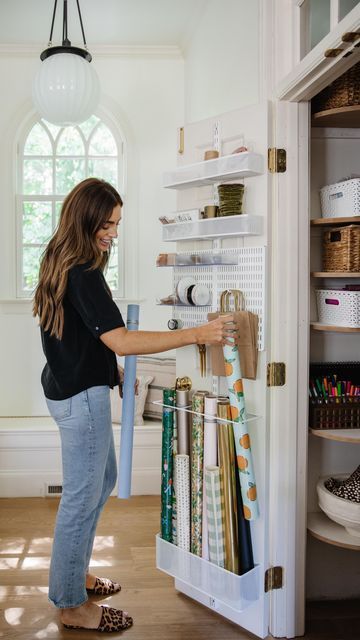


Ever feel like your home is slowly but surely being swallowed by clutter? You’re not alone. In our busy lives, it’s easy for things to pile up, leaving our spaces feeling less like a sanctuary and more like a storage unit. But what if I told you that getting your home in order doesn’t have to be a monumental, stress-inducing task? What if there were simple, casual home organization tips you could actually love and stick to?
That’s exactly what we’re diving into today. We’re not talking about perfectly curated Instagram homes (unless that’s your vibe, of course!). We’re talking about real, actionable strategies that make your daily life smoother, your home more functional, and your mind a little lighter. These 10 home organization tips are designed to be easy to implement, sustainable, and genuinely transform how you interact with your living space. Ready to reclaim your home, one casual step at a time? Let’s get started.
Pros and Cons
| Pros | Cons |
|---|---|
| – Reduces stress and anxiety | – Initial time investment can be daunting |
| – Creates a more functional living space | – Requires ongoing commitment to maintain |
| – Boosts productivity and focus | – May involve letting go of sentimental items |
| – Saves time spent searching for items | – Can be costly if buying many new organizers |
| – Improves overall aesthetic appeal of your home | – Family buy-in might be a challenge |
1. Start Small, Conquer Big
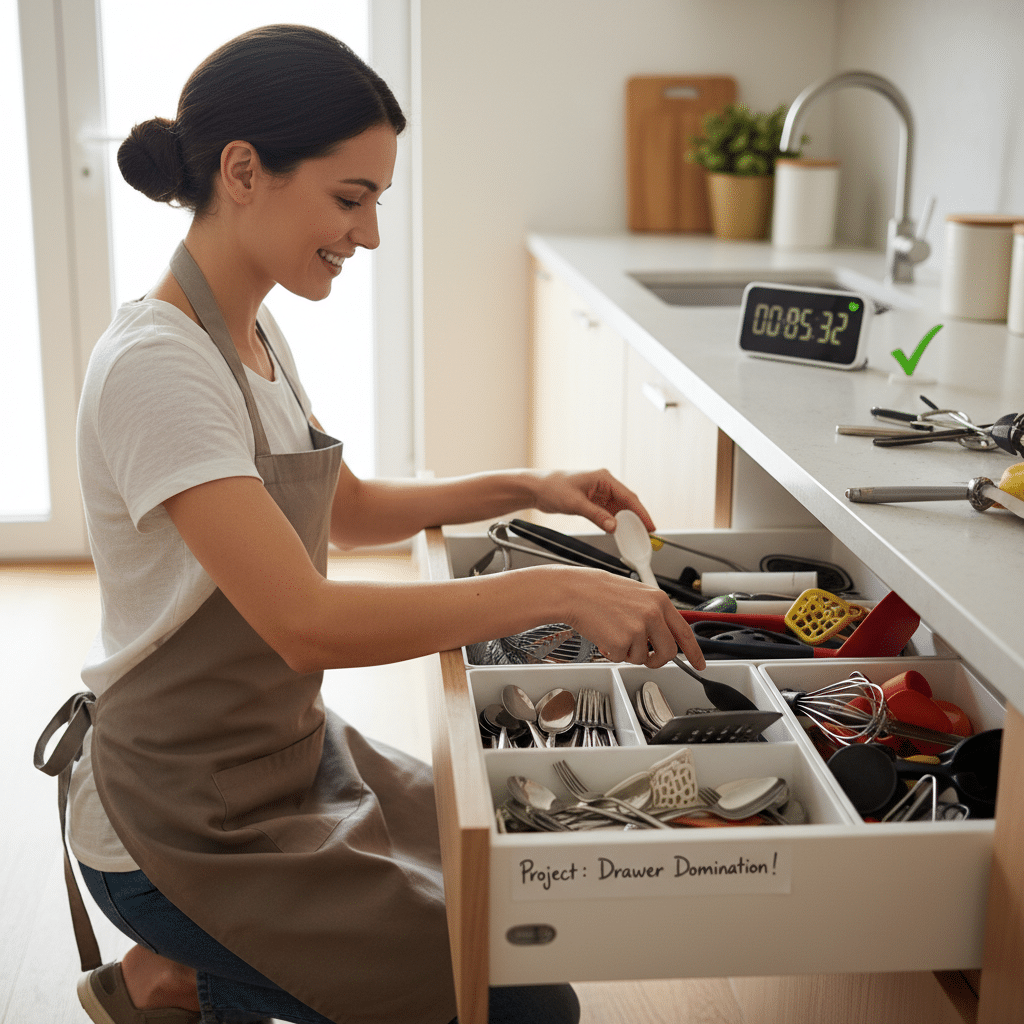
One of the biggest hurdles to getting organized is feeling overwhelmed by the sheer scale of the task. You look around, see mountains of stuff, and suddenly the couch looks like a much better place to be. The secret? Don’t tackle everything at once. This isn’t a sprint; it’s a marathon, and you’re just doing a few laps at a time.
Instead of aiming to declutter your entire house in a weekend, pick one tiny, manageable area. Think small: a single drawer, one shelf in the pantry, the top of your dresser, or even just your nightstand. Give yourself a strict time limit, say 15-30 minutes, and focus solely on that zone. The goal isn’t perfection, but progress.
When you successfully clear out that one small area, you get a quick win. This little victory provides a burst of motivation and proves to yourself that you can do this. That feeling of accomplishment snowballs, making it easier to tackle the next small area. Before you know it, those tiny efforts add up to significant changes. Remember, a journey of a thousand miles begins with a single step – or in this case, a single drawer. This gentle approach helps prevent burnout and makes organization feel less like a chore and more like a series of achievable mini-projects.
2. Implement the “One-In, One-Out” Rule
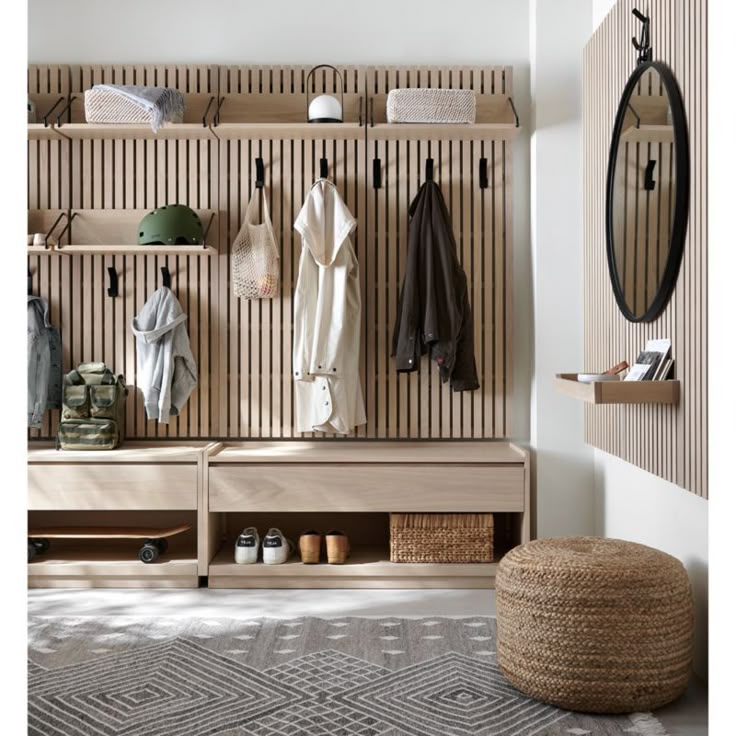
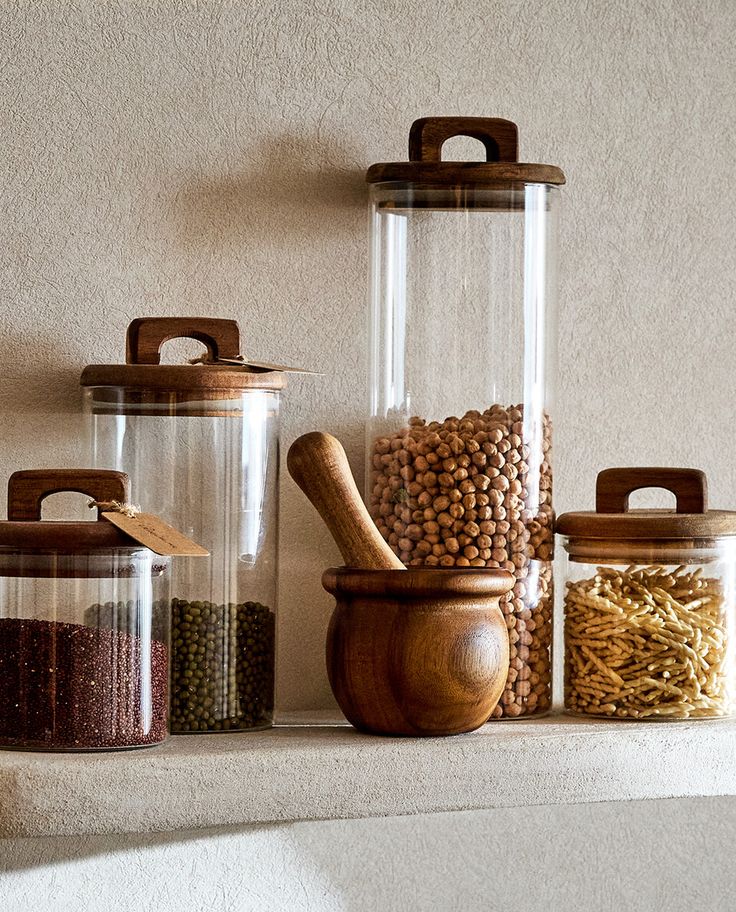
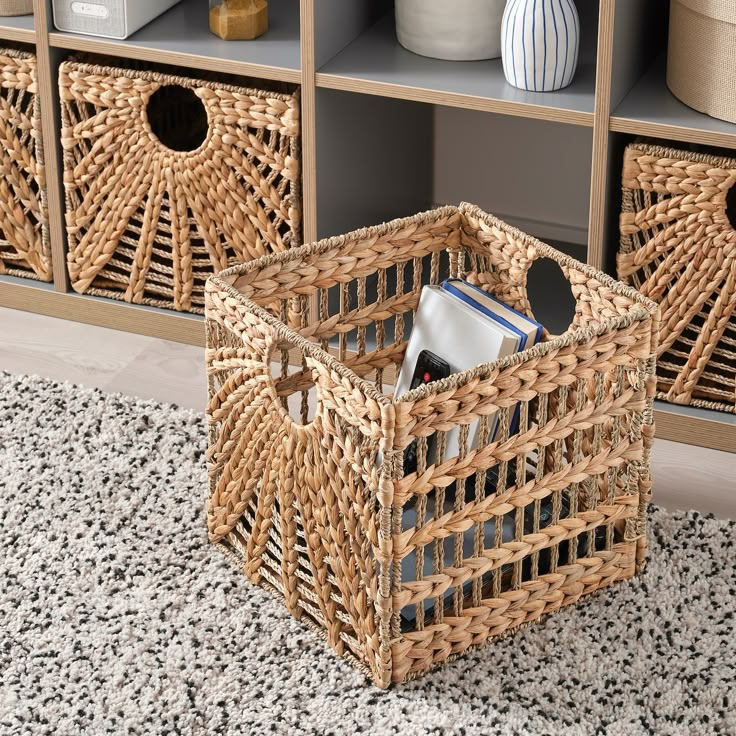
This tip is a game-changer for preventing future clutter, and it’s incredibly simple: every time a new item comes into your home, an old, similar item must go out. This isn’t about becoming a strict minimalist overnight; it’s about maintaining a balance and consciously managing the flow of possessions.
Think about it: you buy a new T-shirt, and an old, faded one you rarely wear goes into the donation pile. You get a new coffee mug, and that chipped one you’ve been meaning to replace finally gets tossed. A new book arrives, and one you’ve already read (and won’t reread) finds a new home at the library or a friend’s house.
This rule forces you to make conscious decisions about what you truly need and value. It prevents the insidious creep of clutter that happens when we just keep accumulating without ever letting go. It encourages mindfulness about purchases and reminds you that your home has finite space. Over time, this simple habit will keep your belongings in check, ensuring that your organizational efforts aren’t undone by new additions. It’s a proactive way to keep your spaces streamlined and avoid future decluttering marathons.
3. Vertical Space is Your Best Friend
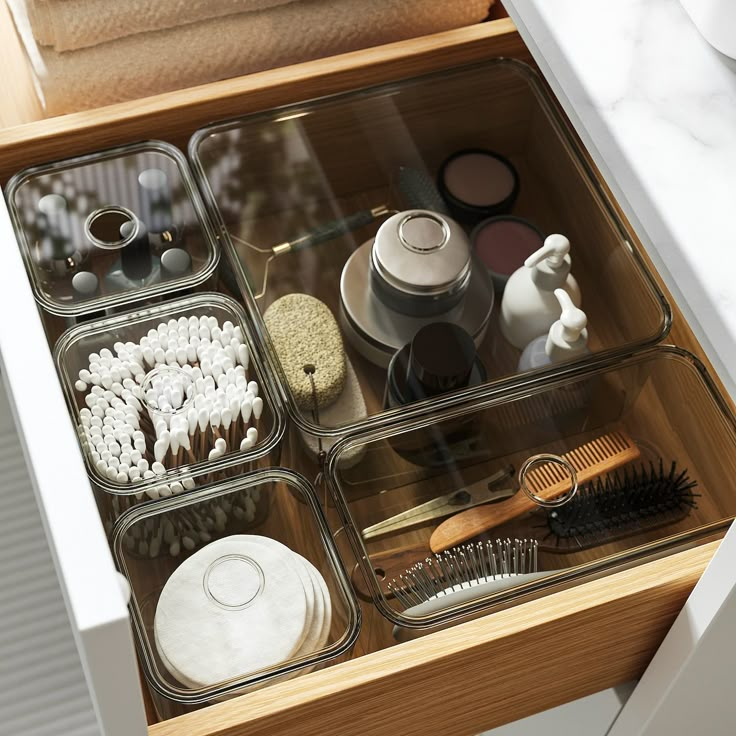


When floor space feels like a precious commodity, look up! Most homes have an abundance of untapped vertical real estate that can be incredibly useful for storage. Don’t let your walls stand idly by; put them to work.
Think about shelves – open shelving, floating shelves, or even bookshelf units that go all the way to the ceiling. These are fantastic for storing books, decorative items, and even everyday essentials in attractive baskets. Wall-mounted organizers, like pegboards in a craft room or magnetic strips in the kitchen for knives, free up counter space instantly. In closets, consider adding extra shelving or using hanging organizers to make the most of the height. Under beds, stackable drawers can be a lifesaver for seasonal clothing or extra linens.
Even in smaller spaces, vertical solutions can make a huge difference. For instance, in a bathroom, over-the-toilet shelving units or wall-mounted cabinets can hold toiletries and towels without taking up valuable floor space. Utilizing vertical space not only helps to contain clutter but also creates visual interest and makes your rooms feel larger and more open. It’s about thinking three-dimensionally about your storage needs. For creative ways to personalize your walls and complement your new storage, check out some DIY wall art ideas.
4. Zone Your Home (Give Everything a “Home”)

Imagine walking into a store where everything is just piled up in random spots. Frustrating, right? Your home can feel the same way if items don’t have a designated place. This tip is all about creating “zones” and giving every single item a specific “home.”
Zoning means assigning a function to different areas of a room, and then storing items related to that function within that zone. For example, in your kitchen, you might have a “baking zone” with all your baking ingredients and tools, a “coffee station” with mugs and coffee maker, and a “cooking zone” near the stove. In the living room, a “reading nook” might have books and a cozy blanket, while a “tech hub” has chargers and remotes.
Once you’ve defined your zones, ensure that every item has a specific place where it lives. If something doesn’t have a home, it tends to migrate around, contributing to clutter. This simple principle makes putting things away automatic, because you’re not wondering “where does this go?” You know exactly where its home is. This drastically reduces the mental load of tidying up and makes finding things a breeze. It’s about designing your home to work for you, not against you.
5. Declutter Ruthlessly (But Smartly)
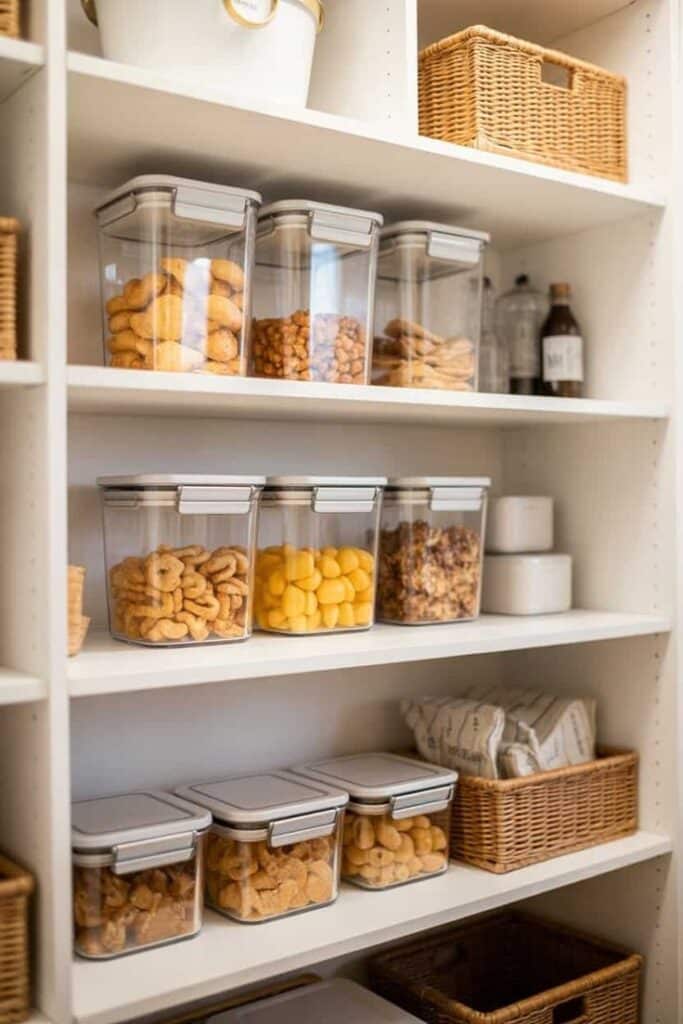
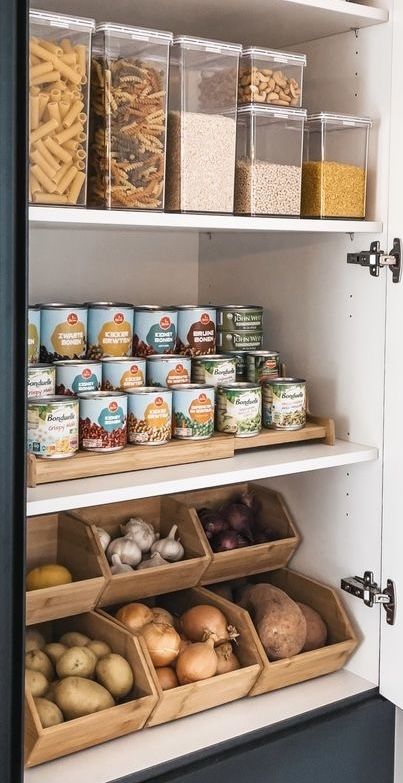

This is where the magic really happens, but it can also be the most challenging part. Decluttering doesn’t mean getting rid of everything; it means letting go of what no longer serves you, makes you happy, or is genuinely useful. The “ruthlessly but smartly” part is key. Don’t just throw things away without thought.
A popular and effective method is the “Four-Box Method.” Grab four boxes and label them:
- Keep: Items you use regularly, love, and definitely want to keep.
- Donate/Sell: Items in good condition that you no longer need but someone else could use.
- Trash/Recycle: Broken items, things beyond repair, or true garbage.
- Relocate: Items that belong in a different room or area of the house.
Work through one category of items at a time (e.g., all your shirts, all your books, all your kitchen utensils). Pick up each item and quickly decide which box it belongs in. Avoid getting bogged down in sentimentality for too long. If you haven’t used it in a year, or it doesn’t bring you joy, it’s probably time for it to go. This methodical approach helps you make swift decisions and prevents decision fatigue. Remember, less stuff means less to organize, less to clean, and more mental clarity. For those with a love for clever gadgets, you might even consider 3D printing some unique top 8 3D printed organizers to assist in this process!
6. Embrace Bins, Baskets, and Dividers

Once you’ve decluttered, the next step is to contain what’s left. This is where organizational tools like bins, baskets, and drawer dividers become your best friends. They’re not just pretty; they’re functional powerhouses that keep categories of items together and prevent them from spreading.
Think about your pantry: instead of loose bags of pasta and spices, use clear bins to group similar items. All snacks go in one bin, baking supplies in another. In your drawers, dividers prevent socks, underwear, or utensils from becoming a jumbled mess. Baskets are fantastic for corralling items on open shelves, like remotes and magazines in the living room, or toys in a kid’s play area. Even simple shoeboxes can be repurposed as drawer dividers!
The key is to choose containers that fit your space and your aesthetic, but prioritize functionality. Clear containers are great because you can see what’s inside, making it easier to find things. Opaque baskets can hide unsightly clutter while still keeping it organized. When everything has a container, it’s much harder for things to get messy, and much easier to put them away. Plus, a beautifully organized space using cohesive containers feels incredibly satisfying.
7. Labels Aren’t Just for Files
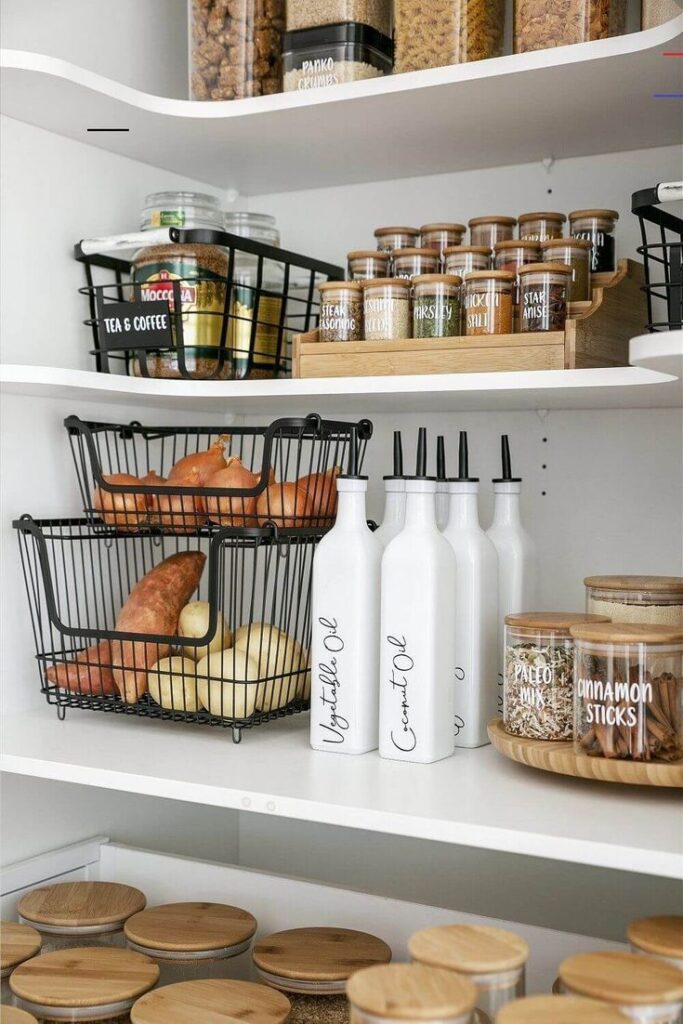

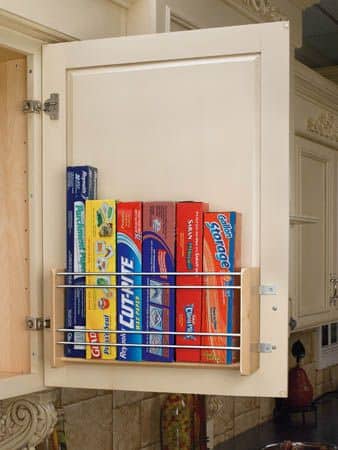
You’ve decluttered, you’ve zoned, and you’ve got your bins and baskets. Now, take it one step further: label everything! This might seem overkill, but it’s a small step that yields huge returns in maintaining your organized home, especially if you live with others.
Labels remove all doubt about where things belong. No more guessing games or items being put in the wrong place. This is especially helpful in shared spaces like kitchens, bathrooms, and playrooms. Imagine a label on a bin that says “Snacks,” “First Aid,” “Craft Supplies,” or even “Kids’ Legos.” Everyone knows exactly where to find things and, more importantly, where to put them back.
Labels can be as simple as a piece of masking tape with a marker, or as elegant as custom-printed labels. Chalk labels on baskets or bins offer flexibility if contents change. The goal is clarity. Labels are the silent organizers that enforce your system and keep your home tidy long-term. They’re not just for grown-ups; labeling toy bins with pictures can even help little ones learn to tidy up!
8. Create a “Landing Strip”

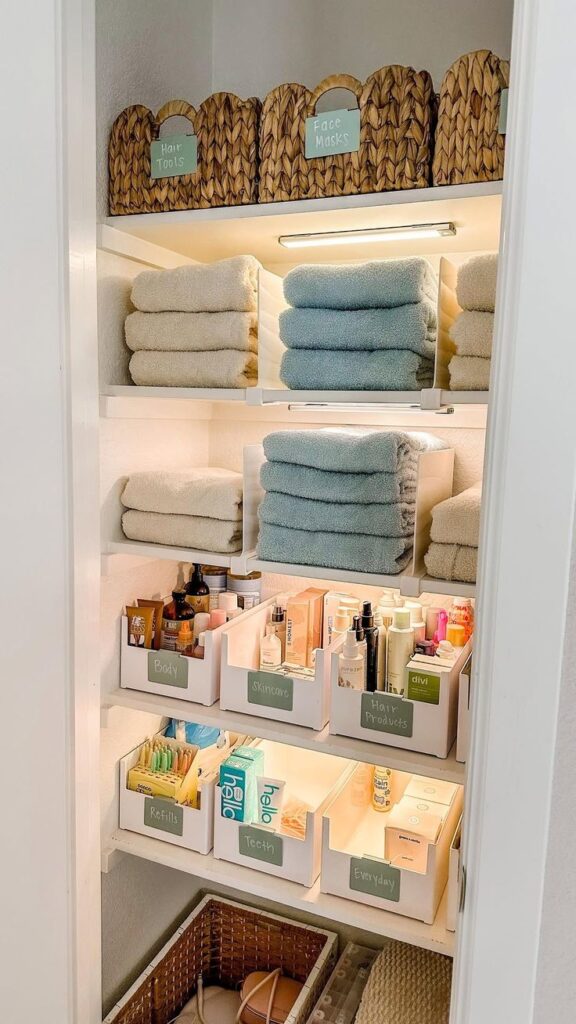

The entryway, mudroom, or even just the space right inside your front door often becomes a chaotic dumping ground. Keys, mail, bags, shoes, coats – it all lands there. This creates instant visual clutter and makes leaving the house a frantic search for essentials. The solution? Create a designated “landing strip.”
A landing strip is an organized area dedicated to the items you regularly bring into and out of your home. It can be simple: a small table or shelf, a key hook, a mail sorter, and a shoe rack. For larger spaces, a bench with cubbies, a coat rack, and a designated spot for bags or backpacks works wonders. The goal is to provide a clear, easy-to-use home for these high-traffic items.
By having a specific spot for everything right when you walk in, you prevent items from migrating to other surfaces in your home. It makes grabbing your keys on the way out a breeze and keeps your main living areas free from entryway overflow. This simple system can significantly reduce daily friction and create a calmer, more welcoming entrance to your home. It’s also an excellent complement to creating a cozy hygge atmosphere right from the moment you step inside.
9. Schedule “Tidy Up” Time (Even 10 Minutes a Day)
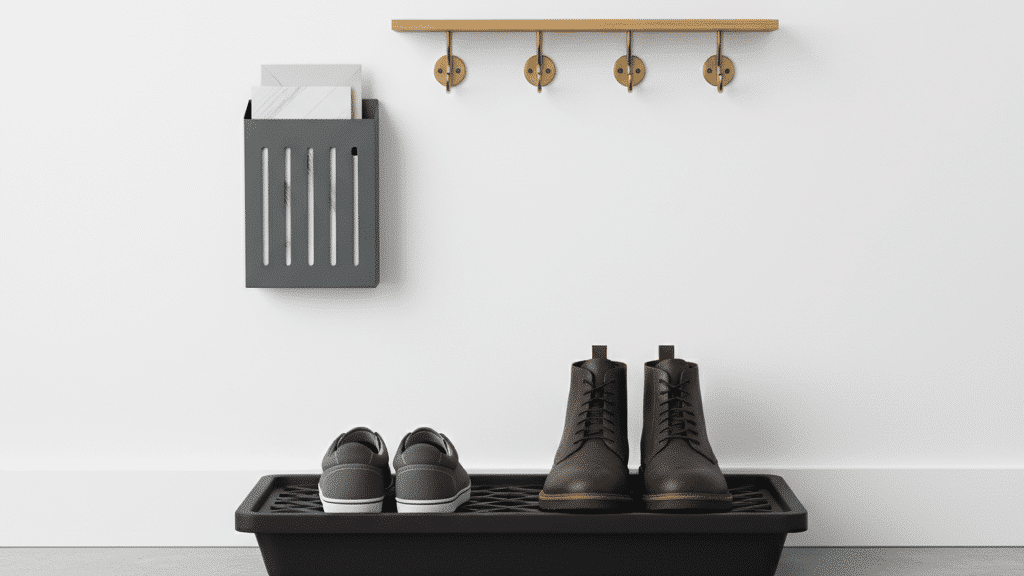
Organization isn’t a one-time event; it’s an ongoing process. The biggest mistake people make is treating it like a project that, once finished, is done forever. Life happens, and things will inevitably get a little messy. The key is to build small, consistent tidying habits into your routine.
Think about dedicating just 10-15 minutes each day to a quick tidy-up. This could be before bed, first thing in the morning, or after dinner. During this time, you focus on resetting your most-used spaces. Put away stray items, wipe down counters, fluff pillows, and generally restore order. This prevents clutter from accumulating to overwhelming levels and keeps your home feeling consistently calm.
Another great strategy is the “reset before you leave” rule. Before you head out for work or errands, take five minutes to quickly tidy up the main living areas. Coming back to a relatively neat home is a mood booster and eliminates that immediate feeling of dread when you walk in the door. Consistency truly is the secret sauce to long-term home organization success.
10. Make It Pretty (and Functional)

Organization doesn’t have to be purely utilitarian. In fact, when your organizational systems are visually appealing, you’re much more likely to maintain them. This tip is all about blending aesthetics with functionality to create a space you genuinely love.
Think about how your storage solutions look. Instead of mismatched plastic containers, invest in cohesive sets of baskets or bins that complement your decor. If you’re going to have open shelving, arrange items thoughtfully, perhaps incorporating decorative pieces alongside functional ones. Use nice-looking jars for pantry staples, stylish folders for documents, or a chic tray for your mail and keys on the landing strip.
Even in closets, using matching hangers or aesthetically pleasing drawer organizers can make a huge difference in how you feel about the space. When you take pride in the appearance of your organized home, you’ll be more motivated to keep it that way. It’s about recognizing that functionality doesn’t mean sacrificing beauty. In fact, a beautiful home often feels more organized because everything has its place, including the beautiful things. You can even take inspiration from designing with what you already own to make your space both organized and uniquely yours without breaking the bank.
Bringing order to your home doesn’t have to be a daunting challenge. By embracing these 10 casual home organization tips, you can transform your space into a more functional, peaceful, and enjoyable environment. From starting small and tackling one drawer at a time, to implementing the “one-in, one-out” rule, utilizing vertical space, and making sure every item has a home, these strategies build on each other to create lasting change.
Remember to declutter smartly, embrace bins and labels, create a practical landing strip, and schedule regular tidy-up times. And don’t forget to make your organizational systems look good! When functionality meets aesthetics, you create a home that not only works better but also feels better. So, pick one tip, start today, and watch as your home, and your peace of mind, become a whole lot clearer.
What are some effective ways to start organizing my home without feeling overwhelmed?
Begin with small, manageable areas like a single drawer or shelf, dedicating 15-30 minutes to declutter and organize. Accomplishing small tasks provides quick wins and motivates you to tackle larger projects gradually.
How can I prevent clutter from accumulating again after organizing?
Implement the ‘One-In, One-Out’ rule, where each new item brings an old, similar item out of the house. This conscious approach helps maintain your organized space by controlling the flow of possessions.
What is the role of vertical space in home organization?
Vertical space, such as shelves and wall-mounted organizers, maximizes storage in small areas and helps contain clutter, making rooms feel larger and more open while keeping items accessible.
Why is creating designated zones in my home important for organization?
Designating zones assigns specific functions to areas and ensures every item has a
- 21shares
- Facebook0
- Pinterest21
- Twitter0


